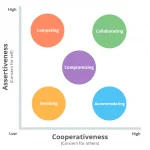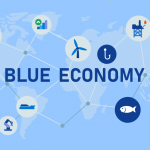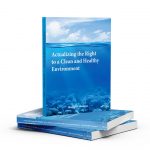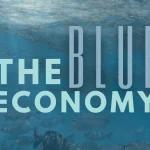News & Analysis
When National Environment Tribunal Saved the Nairobi Expressway
Published
2 years agoon
By
Admin
By Dr. Kariuki Muigua, PhD (Leading Environmental Law Scholar, Sustainable Development Policy Advisor, Natural Resources Lawyer and Dispute Resolution Expert from Kenya), The African Arbitrator of the Year 2022, Kenya’s ADR Practitioner of the Year 2021, CIArb (Kenya) Lifetime Achievement Award 2021 and ADR Publisher of the Year 2021*
One of the landmark cases recently handled by the National Environment Tribunal (NET)comprising chairperson Mohammed Balala, Vice Chairperson Christine Kipsang and members Bahati Mwamuye, Waithaka Ngaruiya and Dr. Kariuki Muigua, PhD was the appeal by lobby groups led by the Greenbelt Movement seeking to stop the construction of the Nairobi expressway by cancelling its EIA License issued by Nema to the contractor China Road and Bridge Corporation an EIA licence. NET dismissed the appeal against Environmental Impact Assessment(EIA) License issued to the contractor for the construction of Nairobi Express Highway where the appellants sought to set aside the EIA license issued by NEMA in respect of Nairobi Express Highway. The appellants had also sought an order that NEMA require Strategic Environmental Assessment (SEA) to be conducted and Resettlement Action Plan to be developed. They also sought that after new SEA and Resettlement Action Plan is carried out, a new EIA be carried out and restoration order be issued to require the Contractor to restore the damages to the environment so far.
The grounds cited by the Appellant for the appeal included that NEMA approved the Terms of Reference (TORs) without conducting scoping exercise contrary to EIA Regulations. Further, it was alleged that NEMA issued an EIA license for the project before subjecting the project to Strategic Environmental Assessment (SEA) contrary to Section 57A of EMCA and Regulation 42 of the EIA Regulations. The Appellants also argued that NEMA issued the EIA Licence despite the fact that the Environmental and Social Impact Assessment (ESIA) process had failed to meet the threshold set out for public participation under Regulation 17(2) of the Regulations and the threshold of information and analysis required under the EIA Regulations and could not possibly form the basis for the grant of an EIA Licence.
In response, Respondents opposed Appeal on grounds, among others, that NEMA (the 1st Respondent) took into account the public consultations as well as the stakeholders’ views during the EIA process, but it was not legally bound by those views but was instead obligated to undertake its own technical and factual assessment based on various principles such as adequacy of mitigation measures, and adequacy of risk assessment and management among others. Further, the 1st Respondent wrote to the Contractor seeking clarification on a number of issues such as the extent to which Uhuru Park would be acquired and the resettlement action plan for all project affected persons; which queries were responded to vide a letter dated 30th March 2020 clarifying that no land was going to be acquired from Uhuru Park, stated that a comprehensive resettlement action plan for all project affected persons and properties was ongoing, and it provided a detailed utility relocation plan for the affected among other clarifications.
As for SEA, the 1st Respondent stated that the same only applies to plans, programs and policies and not to specific projects as is the case in this Appeal. In a nutshell, the 1st Respondent prayed for the dismissal of the Appeal in its totality. The project’s detailed terms of reference do comprehensively identify the potential impacts on the physical and biological environment, the existing infrastructure, land based livelihoods including land ownership, socio-economic considerations among other considerations of what would be impacted by the expressway project. On SEA, the 2nd Respondent (the Contractor) stated that it is not a mandatory requirement prior to the granting of an EIA licence.
On public participation, the 2nd Respondent stated that it took all reasonable steps to ensure that public participation was effective by placing posters in strategic places, publishing advertisements in newspapers with nationwide circulation, broadcasting the advertisement on KBC radio and held at least 8 meetings on various dates in separate locations within Nairobi. It was also argued that the project is founded on the social justice principle of sustainable development not only for the current generation and future generations and is a solution to the serious traffic congestion on the AS road which has caused serious delays for both public and private road users and the resultant pollution, and the reduction in the productive time of the said users.
In its decision, the Tribunal noted that it derives its powers from section 129 of EMCA. The powers of the Tribunal are well set out under section 129 (3) of the Act which provides that “Upon any appeal, the Tribunal may confirm, set aside or vary the order or decision in quest ion; exercise any of the powers which could have been exercised by the authority in the proceedings in connection with which the appeal is brought; or make such other order, including orders to enhance the principles of sustainable development and an order f or costs, as it ma y deem just.“ The Tribunal added that it had considered the Appeal, the evidence presented by the parties and perused the voluminous bundles of documents presented by the parties.
In its finding, the Tribunal found that the project proponent largely complied with the stringent requirements of EMCA and the EIA Regulations for the licensing of the project but did not carry out a climate change analysis. The Tribunal reached the following conclusion:
“117. The Tribunal is faced with the monument al task to make a decision on whether to cancel the EIA Licence in its entirety due to the stated deficiencies or step into the shoes of the 1st Respondent and make orders for compliance on the aspects that we find being incomplete. The effects of cancellation of the licence would be to cause a repeat of the process that has been carried out including public participation and the ensuing processes. We are minded to consider that colossal public funds are incurred during such processes and the repeat of that process does not serve to offer any solution on the environmental impacts involved in the project especially on aspect s of the EIA process that have not been impeached.
- Considering the nature of the project and noting that the project proponent has largely complied with the requirements for the grant of the EIA Licence, the Tribunal declines to cancel the licence but we shall issue order s under sections129 (3) (c) of EMCA to ensure compliance with the requirement for climate change analysis for the disputed project.
- For the foregoing reasons the Tribunal makes the following orders:
(a) The Appellant’s appeal is hereby dismissed;
(b) The Tribunal invokes its powers under section 129(3) (c) of EMCA to make orders for the preservation of the environment and for sustainable development and hereby orders the 2nd Respondent to carry out and complete a climate change analysis for the project within eighteen (18) months from the date of this judgment;
(c) The 1st Respondent shall ensure compliance with order (b) above and the Climate Change Act, Act 11 of 2016; and
(d) Each party shall bear their own costs”
In essence, by ordering China Road and Bridge Corporation to carry out and complete a climate change analysis for the project within 18 months from the date of their judgement, the National Environmental Tribunal (NET) has in effect put climate change analysis to the forefront. Climate change is defined in section 2 of the Climate Change Act to mean, “a change in the climate system which is caused by significant changes in the concentration of greenhouse gases as a consequence of human activities and which is in addition to natural climate change that has been observed during a considerable period.” Section 20 of the Climate Change Act provides that, “The Authority shall integrate climate risk and vulnerability assessment into all forms of assessment and for that purpose liaise with relevant lead agencies for their technical advice.”
The Tribunal held that the road being a project to ease congestion caused by motor vehicles using the AB corridor as well as the vehicles within the larger downtown Nairobi does require an analysis of the impact of the project on the climate as motor vehicles are known transmitters of greenhouse gases. It added that although the ESIA report states that the Expressway shall pass through two distinct climatic zones being the Central Highlands/Rift Valley which includes the Nairobi County’s JKIA-James Gichuru Section; and Eastern Kenya which includes the Machakos County’s Mlolongo-JKIA Section, the report fails to do any analysis of the impacts created by the emissions of greenhouse gases on the sections affected by the Expressway. The Tribunal thus concluded: “We find that climate change analysis was necessary prior to the issuance of the EIA Licence.”
*This article is an extract from published article “National Environment Tribunal, Sustainable Development and Access to Justice in Kenya,” by Dr. Kariuki Muigua, PhD, the African Arbitrator of the Year 2022, Kenya’s ADR Practitioner of the Year 2021 (Nairobi Legal Awards), CIArb (Kenya) ADR Lifetime Achievement Award 2021 and ADR Publisher of the Year 2021. Dr. Kariuki Muigua is a Foremost Dispute Resolution Expert in Africa ranked among Top 6 Arbitrators in Kenya by Chambers and Partners, Leading Environmental Law and Natural Resources Lawyer and Scholar, Sustainable Development Advocate and Conflict Management Expert. Dr. Kariuki Muigua is a Senior Lecturer of Environmental Law and Dispute resolution at the University of Nairobi School of Law and The Center for Advanced Studies in Environmental Law and Policy (CASELAP). He has published numerous books and articles on Environmental Law, Environmental Justice Conflict Management, Alternative Dispute Resolution and Sustainable Development. Dr. Muigua is also a Chartered Arbitrator, an Accredited Mediator, the Africa Trustee of the Chartered Institute of Arbitrators and the Managing Partner of Kariuki Muigua & Co. Advocates. Dr. Muigua is recognized as one of the leading lawyers and dispute resolution experts by the Chambers Global Guide 2022.
References
Muigua, K., “National Environment Tribunal, Sustainable Development and Access to Justice in Kenya,” Available at: http://kmco.co.ke/wp-content/uploads/2020/03/National-Environment-Tribunal-Sustainable-Development-and-Access-to-Justice-in-Kenya-1.pdf (accessed 24 June 2022).
- March 23, 2024
You may like
-


Way Forward for Effective Emergency Arbitration
-
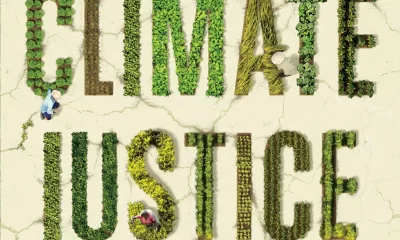

The Definition of Climate Justice
-


Book Review: Combating Climate Change for Sustainability by Dr. Kariuki Muigua
-


Dr. Kariuki Muigua’s 21 Years Journey to Top Arbitrator in Kenya 2023
-


Achieving Sustainable Development Through Effective Environmental Governance in Kenya
-


What is ESG (Environmental, Social and Governance)?
News & Analysis
Review: Alternative Dispute Resolution (ADR) Journal, Volume 12(3), 2024
Published
2 months agoon
April 28, 2024
The Alternative Dispute Resolution (ADR) Journal, Volume. 12, No.3, 2024 covers pertinent and emerging issues across all ADR mechanisms. This volume exposes our readers to a variety of salient topics and concerns in ADR including Building Peace in Africa, Public Policy as a Ground of Setting-Aside an Arbitral Award, Ethics, Integrity and Best Practice in Mediation, Accessing Justice in Kenya, Sports Arbitration, ESG Arbitration, Arbitration of Investor-State Dispute in Kenya, Article 159(2) of the Constitution of Kenya 2010 and issuance of interim measures by Arbitral Tribunals. The ADR Journal is a publication of the Chartered Institute of Arbitrators, Kenya Branch. It provides a platform for scholarly debate and in-depth investigations into both theoretical and practical questions in Alternative Dispute Resolution.
The journal is edited by Professor of Law at the University of Nairobi, Faculty of Law Hon Prof. Kariuki Muigua, a distinguished law scholar, an accomplished mediator and arbitrator with a Ph.D. in law from the University of Nairobi and widespread training and experience in both international and national commercial arbitration and mediation. Prof. Muigua is a Fellow of Chartered Institute of Arbitrators (CIArb)- Kenya chapter and also a Chartered Arbitrator. He is a member of the Permanent Court of Arbitration, The Hague. He also serves as a member of the National Environment Tribunal. He has served as the Chartered Institute of Arbitrator’s (CIArb- UK) Regional Trustee for Africa from 2019 -2022.
In the paper “Building Peace in Africa through Alternative Dispute Resolution” Hon. Prof. Kariuki Muigua critically discusses the role of Alternative Dispute Resolution (ADR) mechanisms in peace building in Africa. The paper argues that ADR mechanisms can play a fundamental role in building peace in Africa. The paper further posits that ADR mechanisms are able to enhance sustainable peace in Africa due to their focus on reconciliation and restorative justice. It proposes solutions towards building peace in Africa through ADR.
In “the Emergence of the International Commercial Court: A Threat to Arbitration of Investor-State Dispute in Kenya” Marion Injendi Wasike and Dr. Kenneth W. Mutuma argue that the proliferation of international commercial courts, including their introduction in Kenya, necessitates a thorough analysis of their implications on arbitration’s role in investor-state disputes. By juxtaposing these emerging judicial entities against traditional arbitration paradigms, the discussion aims to unravel the complexities and potential shifts in dispute resolution preferences, highlighting the balance between innovation in legal adjudication and the sustenance of arbitration’s revered position in the international legal order.
Kamau Karori SC, MBS in “Striking a Balance: A Delicate Dance Between Sanctity and Scrutiny” notes that the continuing debate —between upholding the inviolability of arbitral awards and judicial intervention in cases of egregious injustice points to the need for delicate balancing between non-interference and the need to correct unmistakably unjust awards. The urgency of this discourse is informed by the need to prevent consumers or potential consumers of arbitration services opting to exclude arbitration clauses due to perceived deficiencies. The article seeks to navigate the genesis of the debate, delicately dissect the different perspectives, and draw comparisons with global practices.
The article “Reforming Kenya’s Law on Probation and Aftercare Services to Promote Alternative Dispute Resolution” by Michael Sang engages in a comprehensive exploration of Kenya’s Probation of Offenders Act within the context of the growing role of Alternative Dispute Resolution (ADR) principles in the nation’s criminal justice system. Drawing inspiration from international legal instruments such as “The Beijing Rules,” “Bangkok Rules,” and “Tokyo Rules,” the study evaluates the Act’s provisions, strengths, and limitations. It concludes with a call for thoughtful reforms that align Kenya’s criminal justice system with international standards, emphasizing a balanced and compassionate approach to justice.
The “Upholding Ethics, Integrity and Best Practice in Mediation” by Hon. Prof. Kariuki Muigua, OGW critically discusses the need for standardization of mediation practice in Kenya by adopting best practices. It examines some of the challenges facing mediation practice in Kenya. It is also explores measures adopted towards fostering best practices in mediation at both the global and national level. The paper further suggests recommendations aimed at upholding ethics, integrity and best practice in mediation. In “Exploring the Role of Mediation in Promoting Small and Medium Enterprises (SMEs) and Fostering Economic Growth in Kenya” Atundo Wambare offers an in-depth analysis of the use of mediation in promoting the growth of small and medium enterprises (SME’s). He makes recommendations on how best mediation can be harnessed as a tool for economic growth in Kenya.
James Njuguna and Nyamboga George Nyanaro in “Compulsory Resolution or Autonomy Erosion? The Debate on Mandatory Sports Arbitration delve into the contentious issue of mandatory sports arbitration, questioning its role as a potential future pathway for dispute resolution. Their research examines the implications of compulsory arbitration on athletes’ autonomy, juxtaposing it with the benefits of expedited dispute resolution.
Paul Ngotho in “Constitution of Kenya 2010 Article 159.2.(c): Ancestry, Anatomy, Efficacy & Legacy” traces the rather odd origin and everlasting effect of the often-cited Article 159.2.(c) of the Constitution of Kenya 2010. It acknowledges the central role played by two members of the Chartered Institute of Arbitrators Kenya Branch, quietly and privately, away from the mainstream constitution making process. One of them chairman of the Branch, the other the Minister of Justice, National Cohesion and Constitutional Affairs.
David Onsare in “Navigating The ESG Maze: Emerging Trends in Arbitration and Corporate Accountability” embarks on a timely exploration of the dynamic interplay between Environmental, Social and Governance (ESG) factors and arbitration, a field gaining critical importance in the realm of corporate accountability. By offering a comprehensive view of the complexities and practical implications of ESG in arbitration, the article serves as a crucial guide for legal professionals navigating the evolving landscape of corporate responsibility and arbitration. In “Public Policy as a Ground of Setting-Aside an Arbitral Award: Musings on the Centurion Engineers Civil Appeal Judgment”
Ibrahim Kitoo argues a case for upholding of public policy as a ground for the nonrecognition, non-enforcement and setting aside of an arbitral award in cases where to recognise and enforce such awards proves to be a clear violation of the law and against the public good. Juvenalis Ngowi in “Arbitral Tribunals: Do they have the power to issue interim measures during the proceedings?” discusses the powers of the Arbitral Tribunal to grant such orders and examines some procedural rules which empower arbitrators to issue such orders, the scope of those powers, and the factors to be considered when granting interim measures in the arbitral proceedings.
In “Examining the Efficacy of Mediation as A Tool for Accessing Justice in Kenya: Opportunities, Challenges, and Future Perspectives” Murithi Antony undertakes a thorough examination of mediation as a form of ADR in the Kenyan context. He identifies opportunities arising from the integration of mediation into the country’s legal system and explores barriers impeding its widespread adoption. The article concludes with a resounding call to action for all stakeholders to champion the use of mediation collaboratively and proactively, given its proven efficacy in dispute resolution.
Kariuki Muigua & Company Advocates is a Top-Tier Kenyan law firm situated at the heart of Nairobi city in Kenya. We are a broad-based practice with a reputation for offering a full range of quality services to our domestic and international clients.
At KM&CO, we take pride in offering personalized attention to our diverse clientele. Our practice aspires to offer efficient and cost-effective legal solutions that meet our esteemed clients’ needs in a timely and competent manner.
KM&CO was founded in 1993 by the current senior Advocate, Dr. Kariuki Muigua. It is based in the Central Business District of Nairobi at the Pioneer Assurance House located opposite 7th August Bomb Blast Memorial Park enjoying the convenience of close proximity to major financial, commercial and governmental institutions.
We are open for consultations with our clients worldwide; we have lawyers on standby for 24 hours to cover diverse time zones that impact on our global clients.
News & Analysis
Way Forward in Applying Collaborative Approaches Towards Conflict Management
Published
3 months agoon
March 24, 2024
By Hon. Prof. Kariuki Muigua, OGW, PhD, C.Arb, FCIArb is a Professor of Environmental Law and Dispute Resolution at the University of Nairobi, Member of Permanent Court of Arbitration, Leading Environmental Law Scholar, Respected Sustainable Development Policy Advisor, Top Natural Resources Lawyer, Highly-Regarded Dispute Resolution Expert and Awardee of the Order of Grand Warrior (OGW) of Kenya by H.E. the President of Republic of Kenya. He is the Academic Champion of ADR 2024, the African ADR Practitioner of the Year 2022, the African Arbitrator of the Year 2022, ADR Practitioner of the Year in Kenya 2021, CIArb (Kenya) Lifetime Achievement Award 2021 and ADR Publisher of the Year 2021 and Author of the Kenya’s First ESG Book: Embracing Environmental Social and Governance (ESG) tenets for Sustainable Development” (Glenwood, Nairobi, July 2023) and Kenya’s First Two Climate Change Law Book: Combating Climate Change for Sustainability (Glenwood, Nairobi, October 2023), Achieving Climate Justice for Development (Glenwood, Nairobi, October 2023), Promoting Rule of Law for Sustainable Development (Glenwood, Nairobi, January 2024) and Actualizing the Right to a Clean and Healthy Environment (Glenwood, Nairobi, March 2024)*
It is necessary to embrace and utilize collaborative approaches in managing conflicts. These techniques include mediation, negotiation, and facilitation. These mechanisms are effective in managing conflicts since they encourage parties to embrace and address disagreements through empathy and listening towards mutually beneficial solutions. Collaborative approaches also have the potential to preserve relationships, build trust, and promote long term positive change. They also ensure a win-win solution is found so that everyone is satisfied which creates the condition for peace and sustainability. These approaches are therefore ideal in managing conflicts. It is therefore important to embrace collaborative approaches in order to ensure effective management of conflicts.
In addition, it is necessary for third parties including mediators and facilitators to develop their skills and techniques in order to enhance the effectiveness of collaborative approaches towards conflict management. For example, it has correctly been observed that mediators and facilitators should listen actively and empathetically in order to assist parties to collaborate towards managing their dispute. Therefore, when a dispute arises, the first step should involve listening to all parties involved with an open mind and without judgment. This should entail active listening, which means paying attention to both verbal and nonverbal cues and acknowledging the emotions and perceptions involved.
It has been observed that by listening empathetically, a third party such as a mediator of facilitator can understand each person’s perspective and start to build a foundation for resolving the conflict through collaboration. In addition, while collaborating towards conflict management, it is necessary to encourage and help parties to focus on interests and not positions. It has been pointed out that focusing positions can result in a standstill which can delay or even defeat the conflict management process. However, by identifying and addressing the underlying interests parties can find common ground and collaborate towards coming up with creative solutions towards their conflict.
Mediators and facilitators should also assist parties to look for areas of agreement or shared goals. Identifying a common ground can build momentum and create a positive environment for resolving the conflict. Further, in order to ensure the effectiveness of collaborative approaches in conflict management, it is necessary to build strong collaboration. It has been asserted that strong collaboration can be achieved by establishing a shared purpose, cultivating trust among parties, encouraging active participation by all parties, and promoting effective communication.
Strong collaboration enables parties to develop trust between and among themselves and strengthen communication channels between the various parties. It also helps to generate inclusive solutions that arise from wider stakeholders’ views. Therefore while applying collaborative approaches, it is necessary for parties to foster strong collaboration by identifying common goals, building trust, ensuring that all stakeholders are involved, and communicating effectively in order to come up with win-win outcomes.
Finally, while embracing collaborative approaches in conflict management, it is necessary for parties to consider seeking help from third parties if need arises. For example, negotiation is always the first point of call whenever a conflict arises whereby parties attempt to manage their conflict without the involvement of third parties. It has been described as the most effective collaborative approach towards conflict management since it starts with an understanding by both parties that they must search for solutions that satisfy everyone.
It enables parties to a dispute to come together to openly discuss the issue causing tension, actively listen to each other, and come up with mutually satisfactory solutions. However, it has been correctly observed that negotiation may fail especially if the conflict is particularly complex or involves multiple parties due to challenges in collaborating. In such circumstances, where negotiation fails, parties should consider resorting to other collaborative approaches such as mediation and facilitation where they attempt to manage the conflict with the help of a third party. A mediator or facilitator can assist parties to collaborate and continue with the negotiations and ultimately break the deadlock.
*This is an extract from Kenya’s First Clean and Healthy Environment Book: Actualizing the Right to a Clean and Healthy Environment (Glenwood, Nairobi, January 2024) by Hon. Prof. Kariuki Muigua, OGW, PhD, Professor of Environmental Law and Dispute Resolution, Senior Advocate of Kenya, Chartered Arbitrator, Kenya’s ADR Practitioner of the Year 2021 (Nairobi Legal Awards), ADR Lifetime Achievement Award 2021 (CIArb Kenya), African Arbitrator of the Year 2022, Africa ADR Practitioner of the Year 2022, Member of National Environment Tribunal (NET) Emeritus (2017 to 2023) and Member of Permanent Court of Arbitration nominated by Republic of Kenya and Academic Champion of ADR 2024. Prof. Kariuki Muigua is a foremost Environmental Law and Natural Resources Lawyer and Scholar, Sustainable Development Advocate and Conflict Management Expert in Kenya. Prof. Kariuki Muigua teaches Environmental Law and Dispute resolution at the University of Nairobi School of Law, The Center for Advanced Studies in Environmental Law and Policy (CASELAP) and Wangari Maathai Institute for Peace and Environmental Studies. He has published numerous books and articles on Environmental Law, Environmental Justice Conflict Management, Alternative Dispute Resolution and Sustainable Development. Prof. Muigua is also a Chartered Arbitrator, an Accredited Mediator, the Managing Partner of Kariuki Muigua & Co. Advocates and Africa Trustee Emeritus of the Chartered Institute of Arbitrators 2019-2022. Prof. Muigua is a 2023 recipient of President of the Republic of Kenya Order of Grand Warrior (OGW) Award for his service to the Nation as a Distinguished Expert, Academic and Scholar in Dispute Resolution and recognized among the top 5 leading lawyers and dispute resolution experts in Band 1 in Kenya by the Chambers Global Guide 2024 and was listed in the Inaugural THE LAWYER AFRICA Litigation Hall of Fame 2023 as one of the Top 50 Most Distinguished Litigation Lawyers in Kenya and the Top Arbitrator in Kenya in 2023.
References
Bercovitch. J., ‘Conflict and Conflict Management in Organizations: A Framework for Analysis.’ Available at https://ocd.lcwu.edu.pk/cfiles/International%20Relations/EC/IR403/Conflict.ConflictManagementinOrga nizations.pdf (Accessed on 01/03/2024).
Bercovitch. J., ‘Mediation Success or Failure: A Search for the Elusive Criteria.’ Cardozo Journal of Conflict Resolution, Vol. 7, p 289.
Bloomfield. D., ‘Towards Complementarity in Conflict Management: Resolution and Settlement in Northern Ireland,’ Journal of Peace Research., Volume 32, Issue 2.
Burrell. B., ‘The Five Conflict Styles’ Available at https://web.mit.edu/collaboration/mainsite/ modules/module1/1.11.5.html (Accessed on 01/03/2024).
Demmers. J., ‘Theories of Violent Conflict: An Introduction’ (Routledge, New York, 2012).
Diana. M., ‘From Conflict to Collaboration’ Available at https://www.pmi.org/learning/library/conflict-collaboration-beyond-projectsuccess-1899 (Accessed on 01/03/2024).
Food and Agriculture Organization., ‘Collaborative Conflict Management for Enhanced National Forest Programmes (NFPs)’ Available at https://www.fao.org/3/i2604e/i2604e00.pdf (Accessed on 01/03/2024).
International Organization for Peace Building., ‘Natural Resources and Conflict: A Path to Mediation.’ Available at https://www.interpeace.org/2015/11/naturalresources-and-conflict-a-path-to-mediation/ (Accessed on 01/03/2024).
Isenhart. M.W., & Spangle. M., ‘Summary of “Collaborative Approaches to Resolving Conflict” ‘ Available at https://www.beyondintractability.org/bksum/isenhart-collaborative (Accessed on 01/03/2024).
Kaushal. R., & Kwantes. C., ‘The Role of Culture and Personality in Choice of Conflict Management Strategy.’ International Journal of Intercultural Relations 30 (2006) 579– 603.
Leeds. C.A., ‘Managing Conflicts across Cultures: Challenges to Practitioners.’ International Journal of Peace Studies, Volume 2, No. 2, 1997.
May. E., ‘Collaborating Conflict Style Explained In 4 Minutes’ Available at https://www.niagara institute.com/blog/collaborating-conflict-style/ (Accessed on 01/03/2024).
Miroslavov. M., ‘Mastering the Collaborating Conflict Style In 2024’ Available at https://www.officernd.com/blog/collaborating-conflictstyle/#:~:text=It’s%20one%20of%20the%20strat egies,their%20underlying%20needs %20and%20interests. (Accessed on 01/03/2024).
Muigua. K & Kariuki. F., ‘ADR, Access to Justice and Development in Kenya.’ Available at http://kmco.co.ke/wp-content/uploads/2018/08/ADR-access-tojustice-and-development-inKenyaRevised-version-of-20.10.14.pdf (Accessed on 01/03/2024).
Muigua. K., ‘Alternative Dispute Resolution and Access to Justice in Kenya.’ Glenwood Publishers Limited, 2015.
Muigua. K., ‘Reframing Conflict Management in the East African Community: Moving from Alternative to ‘Appropriate’ Dispute Resolution.’ Available at https://kmco.co.ke/wpcontent/uploads/2023/06/ Reframing-ConflictManagement-in-the-East-African-CommunityMoving-from-Alternative-toAppropriate-Dispute-Resolution (Accessed on 01/03/2024).
Muigua. K., ‘Resolving Conflicts through Mediation in Kenya.’ Glenwood Publishers Limited, 2nd Edition., 2017.
Quain. S., ‘The Advantages & Disadvantages of Collaborating Conflict Management’ Available at https://smallbusiness.chron.com/advantagesdisadvantages-collaborating-conflict-management-36052.html (Accessed on 01/03/2024).
Samuel. A., ‘Is the Collaborative Style of Conflict Management the Best Approach?’ Available at https://www.linkedin.com/pulse/collaborative-style-conflictmanagement-best-approach-samuel-ansah (Accessed on 01/03/2024).
United Nations., ‘Land and Conflict’ Available at https://www.un.org/en/landnatural-resources-conflict/pdfs/GN_ExeS_Land%20and%20Conflict.pdf (Accessed on 01/03/2024).
Weiss. J., & Hughes. J., ‘Want Collaboration?: Accept—and Actively Manage— Conflict’ Available at https://hbr.org/2005/03/want-collaboration-accept-andactively-manage-conflict (Accessed on 01/03/2024).
Kariuki Muigua & Company Advocates is a Top-Tier Kenyan law firm situated at the heart of Nairobi city in Kenya. We are a broad-based practice with a reputation for offering a full range of quality services to our domestic and international clients.
At KM&CO, we take pride in offering personalized attention to our diverse clientele. Our practice aspires to offer efficient and cost-effective legal solutions that meet our esteemed clients’ needs in a timely and competent manner.
KM&CO was founded in 1993 by the current senior Advocate, Dr. Kariuki Muigua. It is based in the Central Business District of Nairobi at the Pioneer Assurance House located opposite 7th August Bomb Blast Memorial Park enjoying the convenience of close proximity to major financial, commercial and governmental institutions.
We are open for consultations with our clients worldwide; we have lawyers on standby for 24 hours to cover diverse time zones that impact on our global clients.
News & Analysis
Opportunities and Challenges of Collaborative Conflict Management
Published
3 months agoon
March 24, 2024
By Hon. Prof. Kariuki Muigua, OGW, PhD, C.Arb, FCIArb is a Professor of Environmental Law and Dispute Resolution at the University of Nairobi, Member of Permanent Court of Arbitration, Leading Environmental Law Scholar, Respected Sustainable Development Policy Advisor, Top Natural Resources Lawyer, Highly-Regarded Dispute Resolution Expert and Awardee of the Order of Grand Warrior (OGW) of Kenya by H.E. the President of Republic of Kenya. He is the Academic Champion of ADR 2024, the African ADR Practitioner of the Year 2022, the African Arbitrator of the Year 2022, ADR Practitioner of the Year in Kenya 2021, CIArb (Kenya) Lifetime Achievement Award 2021 and ADR Publisher of the Year 2021 and Author of the Kenya’s First ESG Book: Embracing Environmental Social and Governance (ESG) tenets for Sustainable Development” (Glenwood, Nairobi, July 2023) and Kenya’s First Two Climate Change Law Book: Combating Climate Change for Sustainability (Glenwood, Nairobi, October 2023), Achieving Climate Justice for Development (Glenwood, Nairobi, October 2023), Promoting Rule of Law for Sustainable Development (Glenwood, Nairobi, January 2024) and Actualizing the Right to a Clean and Healthy Environment (Glenwood, Nairobi, March 2024)*
One of the key collaborative approaches that can be applied in conflict management is mediation. Mediation has been defined as a method of conflict management where conflicting parties gather to seek solutions to the conflict, with the assistance of a third party who facilitates discussions and the flow of information, and thus aiding in the process of reaching an agreement.
Mediation is usually a continuation of the negotiation process since it arises where parties to a conflict have attempted negotiations, but have reached a deadlock. Parties therefore involve a third party known as a mediator to assist them continue with the negotiations and ultimately break the deadlock. A mediator does not have the power to impose a solution upon the parties but rather facilitates communication, promotes understanding, focuses the parties on their interests, and uses creative problem solving to enable the parties to reach their own agreement.
Some of the core values and principles guiding mediation as a collaborative approach towards conflict management include impartiality, empathy, valued reputation, and confidentiality. It has also been pointed out that mediation has certain attributes which include informality, flexibility, efficiency, confidentiality, party autonomy and the ability to promote expeditious and cost effective management of dispute which makes it an ideal mechanism for managing disputes.
Mediation is an effective mechanism that can foster collaboration due to its potential to build peace and bring people together, binding them towards a common goal. Mediation can also foster effective management of conflicts by building consensus and collaboration. It has been argued that mediation can enhance collaboration towards conflict management due to its emphasis on the need for a mediator who listen to the wants, needs, fears, and concerns of all sides. Therefore, for mediation to be effective in fostering collaboration, the approach must be mild and non-confrontational because the goal is to make all parties feel comfortable expressing their views and opinions.
Another key collaborative approach towards conflict management is negotiation. It has been defined as an informal process that involves parties to a conflict meeting to identify and discuss the issues at hand so as to arrive at a mutually acceptable solution without the help of a third party. Negotiation is one of the most fundamental methods of managing conflicts which offers parties maximum control over the process66. It aims at harmonizing the interests of the parties concerned amicably. Negotiation has been described as the process that creates and fuels collaboration.
Negotiation fosters collaboration since it involves all parties sitting down together, talking through the conflict and working towards a solution together. Negotiation has been described as the most effective collaborative approach towards conflict management since it starts with an understanding by both parties that they must search for solutions that satisfy everyone. It enables parties to a dispute to come together to openly discuss the issue causing tension, actively listen to each other, and come up with mutually satisfactory solutions. If negotiation fails, parties may resort to other collaborative approaches such as mediation and facilitation where they attempt to manage the conflict with the help of a third party.
Facilitation is another key collaborative approach towards conflict management. Facilitation entails a third party known as a facilitator who helps parties to a conflict to understand their common objectives and achieve them without while remaining objective in the discussion. A facilitator assists conflicting parties in achieving consensus on any disagreements so that they have a strong basis for future action.
It has been pointed out that facilitation is effective in fostering collaboration in conflict management particularly in conflicts which are complex in nature or those that involve multiple parties. In such conflicts, it is necessary to seek outside help from a neutral third party to facilitate the discussion as parties work towards mutually acceptable outcomes.
Applying collaborative approaches towards conflict management offers several advantages. It has been pointed out that collaborating results in mutually acceptable solutions. Such solutions can therefore be effective and long lasting negating the likelihood of conflicts reemerging in future. Collaborating signifies joint efforts, gain for both parties and integrated solutions arrived at by consensual decisions.
Collaborating is also very effective when it is necessary to build or maintain relationships since it focuses on the needs and interests of all parties in a dispute. It has been observed that collaborative approaches emphasize trust-building, open communication, and empathizing with each other’s perspectives which goes beyond resolving conflicts to facilitate deeper understandings of each other. Collaborative approaches can therefore lead to better interpersonal connections.
Collaborating can also result in constructive decision-making since encouraging active engagement and open dialogue helps others think outside of the box and explore innovative paths towards conflict management. Further, by encouraging the participation and involvement of all stakeholders, collaboration ensures that everyone feels heard, valued and understood which is very essential in managing conflicts.
In addition, collaborating sets the tone for future conflict resolutions since it gives those involved the shared responsibility to resolve their problems. However, collaborative approaches towards conflict management have also been associated with several drawbacks. For example, it has been observed that collaborative approaches may not be easy to implement since they involve a lot of effort to get an actionable solution. It has been observed that thorough discussions, active participation, and exploring multiple perspectives as envisaged by collaborative approaches take time.
Collaborating may therefore require patience and dedication to ensure all voices are heard and meaningful resolutions are reached. Achieving consensus through collaborative approaches can also be difficult since conflicting opinions, varying conflict goals, and emotional variables can make the consensus-building process challenging and time-consuming. As a result of these challenges, it has been asserted that collaborative approaches towards conflict management are frequently the most difficult and time-consuming to achieve.
Further, it has been argued that over use of collaboration and consensual decision-making may reflect risk aversion tendencies or an inclination to defuse responsibility. Despite these challenges, collaborative approaches towards conflict management are ideal in ensuring win-win and long lasting outcomes. It is therefore necessary to embrace and apply collaborative approaches towards conflict management.
*This is an extract from Kenya’s First Clean and Healthy Environment Book: Actualizing the Right to a Clean and Healthy Environment (Glenwood, Nairobi, January 2024) by Hon. Prof. Kariuki Muigua, OGW, PhD, Professor of Environmental Law and Dispute Resolution, Senior Advocate of Kenya, Chartered Arbitrator, Kenya’s ADR Practitioner of the Year 2021 (Nairobi Legal Awards), ADR Lifetime Achievement Award 2021 (CIArb Kenya), African Arbitrator of the Year 2022, Africa ADR Practitioner of the Year 2022, Member of National Environment Tribunal (NET) Emeritus (2017 to 2023) and Member of Permanent Court of Arbitration nominated by Republic of Kenya and Academic Champion of ADR 2024. Prof. Kariuki Muigua is a foremost Environmental Law and Natural Resources Lawyer and Scholar, Sustainable Development Advocate and Conflict Management Expert in Kenya. Prof. Kariuki Muigua teaches Environmental Law and Dispute resolution at the University of Nairobi School of Law, The Center for Advanced Studies in Environmental Law and Policy (CASELAP) and Wangari Maathai Institute for Peace and Environmental Studies. He has published numerous books and articles on Environmental Law, Environmental Justice Conflict Management, Alternative Dispute Resolution and Sustainable Development. Prof. Muigua is also a Chartered Arbitrator, an Accredited Mediator, the Managing Partner of Kariuki Muigua & Co. Advocates and Africa Trustee Emeritus of the Chartered Institute of Arbitrators 2019-2022. Prof. Muigua is a 2023 recipient of President of the Republic of Kenya Order of Grand Warrior (OGW) Award for his service to the Nation as a Distinguished Expert, Academic and Scholar in Dispute Resolution and recognized among the top 5 leading lawyers and dispute resolution experts in Band 1 in Kenya by the Chambers Global Guide 2024 and was listed in the Inaugural THE LAWYER AFRICA Litigation Hall of Fame 2023 as one of the Top 50 Most Distinguished Litigation Lawyers in Kenya and the Top Arbitrator in Kenya in 2023.
References
Bercovitch. J., ‘Conflict and Conflict Management in Organizations: A Framework for Analysis.’ Available at https://ocd.lcwu.edu.pk/cfiles/International%20Relations/EC/IR403/Conflict.ConflictManagementinOrga nizations.pdf (Accessed on 01/03/2024).
Bercovitch. J., ‘Mediation Success or Failure: A Search for the Elusive Criteria.’ Cardozo Journal of Conflict Resolution, Vol. 7, p 289.
Bloomfield. D., ‘Towards Complementarity in Conflict Management: Resolution and Settlement in Northern Ireland,’ Journal of Peace Research., Volume 32, Issue 2.
Burrell. B., ‘The Five Conflict Styles’ Available at https://web.mit.edu/collaboration/mainsite/ modules/module1/1.11.5.html (Accessed on 01/03/2024).
Demmers. J., ‘Theories of Violent Conflict: An Introduction’ (Routledge, New York, 2012).
Diana. M., ‘From Conflict to Collaboration’ Available at https://www.pmi.org/learning/library/conflict-collaboration-beyond-projectsuccess-1899 (Accessed on 01/03/2024).
Food and Agriculture Organization., ‘Collaborative Conflict Management for Enhanced National Forest Programmes (NFPs)’ Available at https://www.fao.org/3/i2604e/i2604e00.pdf (Accessed on 01/03/2024).
International Organization for Peace Building., ‘Natural Resources and Conflict: A Path to Mediation.’ Available at https://www.interpeace.org/2015/11/naturalresources-and-conflict-a-path-to-mediation/ (Accessed on 01/03/2024).
Isenhart. M.W., & Spangle. M., ‘Summary of “Collaborative Approaches to Resolving Conflict” ‘ Available at https://www.beyondintractability.org/bksum/isenhart-collaborative (Accessed on 01/03/2024).
Kaushal. R., & Kwantes. C., ‘The Role of Culture and Personality in Choice of Conflict Management Strategy.’ International Journal of Intercultural Relations 30 (2006) 579– 603.
Leeds. C.A., ‘Managing Conflicts across Cultures: Challenges to Practitioners.’ International Journal of Peace Studies, Volume 2, No. 2, 1997.
May. E., ‘Collaborating Conflict Style Explained In 4 Minutes’ Available at https://www.niagara institute.com/blog/collaborating-conflict-style/ (Accessed on 01/03/2024).
Miroslavov. M., ‘Mastering the Collaborating Conflict Style In 2024’ Available at https://www.officernd.com/blog/collaborating-conflictstyle/#:~:text=It’s%20one%20of%20the%20strat egies,their%20underlying%20needs %20and%20interests. (Accessed on 01/03/2024).
Muigua. K & Kariuki. F., ‘ADR, Access to Justice and Development in Kenya.’ Available at http://kmco.co.ke/wp-content/uploads/2018/08/ADR-access-tojustice-and-development-inKenyaRevised-version-of-20.10.14.pdf (Accessed on 01/03/2024).
Muigua. K., ‘Alternative Dispute Resolution and Access to Justice in Kenya.’ Glenwood Publishers Limited, 2015.
Muigua. K., ‘Reframing Conflict Management in the East African Community: Moving from Alternative to ‘Appropriate’ Dispute Resolution.’ Available at https://kmco.co.ke/wpcontent/uploads/2023/06/ Reframing-ConflictManagement-in-the-East-African-CommunityMoving-from-Alternative-toAppropriate-Dispute-Resolution (Accessed on 01/03/2024).
Muigua. K., ‘Resolving Conflicts through Mediation in Kenya.’ Glenwood Publishers Limited, 2nd Edition., 2017.
Quain. S., ‘The Advantages & Disadvantages of Collaborating Conflict Management’ Available at https://smallbusiness.chron.com/advantagesdisadvantages-collaborating-conflict-management-36052.html (Accessed on 01/03/2024).
Samuel. A., ‘Is the Collaborative Style of Conflict Management the Best Approach?’ Available at https://www.linkedin.com/pulse/collaborative-style-conflictmanagement-best-approach-samuel-ansah (Accessed on 01/03/2024).
United Nations., ‘Land and Conflict’ Available at https://www.un.org/en/landnatural-resources-conflict/pdfs/GN_ExeS_Land%20and%20Conflict.pdf (Accessed on 01/03/2024).
Weiss. J., & Hughes. J., ‘Want Collaboration?: Accept—and Actively Manage— Conflict’ Available at https://hbr.org/2005/03/want-collaboration-accept-andactively-manage-conflict (Accessed on 01/03/2024).
Kariuki Muigua & Company Advocates is a Top-Tier Kenyan law firm situated at the heart of Nairobi city in Kenya. We are a broad-based practice with a reputation for offering a full range of quality services to our domestic and international clients.
At KM&CO, we take pride in offering personalized attention to our diverse clientele. Our practice aspires to offer efficient and cost-effective legal solutions that meet our esteemed clients’ needs in a timely and competent manner.
KM&CO was founded in 1993 by the current senior Advocate, Dr. Kariuki Muigua. It is based in the Central Business District of Nairobi at the Pioneer Assurance House located opposite 7th August Bomb Blast Memorial Park enjoying the convenience of close proximity to major financial, commercial and governmental institutions.
We are open for consultations with our clients worldwide; we have lawyers on standby for 24 hours to cover diverse time zones that impact on our global clients.

Review: Alternative Dispute Resolution (ADR) Journal, Volume 12(3), 2024

Eric Kivuva: Reset and Calibrate for a Nairobi LSK Branch that Delights Members

Irene Kiwool: My Track Record and Call to PACT for Better Nairobi LSK

A Toolkit for Customers on accessing Financial Services in Kenya

Way Forward in Applying Collaborative Approaches Towards Conflict Management

Opportunities and Challenges of Collaborative Conflict Management
Trending
-

 Lawyers1 year ago
Lawyers1 year agoTHE LAWYER AFRICA Litigation Hall of Fame | Kenya in 2023
-
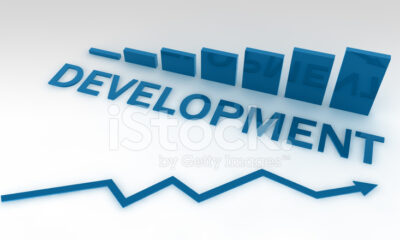
 News & Analysis2 years ago
News & Analysis2 years agoThe Definition, Aspects and Theories of Development
-

 News & Analysis2 years ago
News & Analysis2 years agoThe Definition and Scope of Biodiversity
-
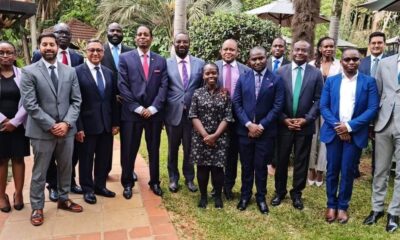
 News & Analysis2 years ago
News & Analysis2 years agoTHE TOP 200 ARBITRATORS IN KENYA 2022
-

 News & Analysis9 months ago
News & Analysis9 months agoThe Role of NEMA in Pollution Control in Kenya
-
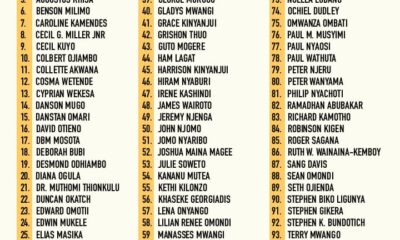
 Lawyers1 year ago
Lawyers1 year agoTHE LAWYER AFRICA Top 100 Litigation Lawyers in Kenya 2023
-

 News & Analysis2 years ago
News & Analysis2 years agoRole of Science and Technology in Environmental Management in Kenya
-
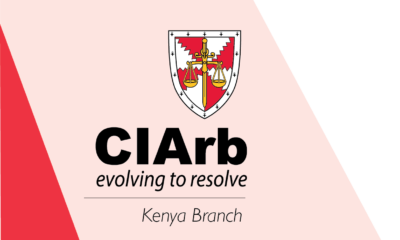
 News & Analysis9 months ago
News & Analysis9 months agoHow to Become an Arbitrator in Kenya



